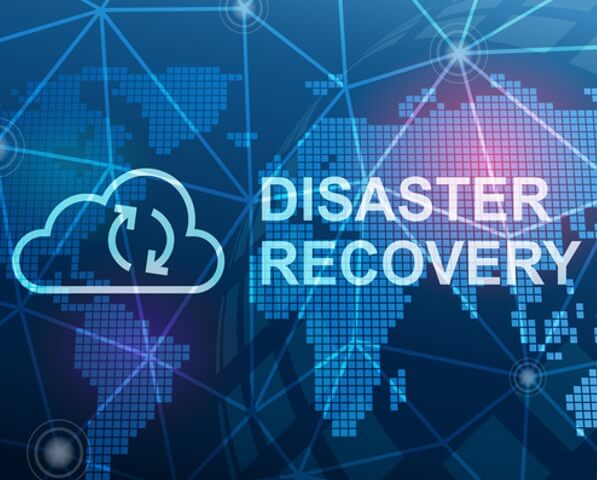
What is a Network Disaster Recovery Plan?
 A Network Disaster Recovery Plan is a comprehensive strategy outlining procedures and protocols to ensure the restoration of network functionality after a disruptive event. Such events could include natural disasters, cyber-attacks, hardware failures, or any incident that can compromise the integrity and availability of a computer network. The primary goal is to minimise downtime, protect data integrity, and facilitate a swift and effective recovery.
A Network Disaster Recovery Plan is a comprehensive strategy outlining procedures and protocols to ensure the restoration of network functionality after a disruptive event. Such events could include natural disasters, cyber-attacks, hardware failures, or any incident that can compromise the integrity and availability of a computer network. The primary goal is to minimise downtime, protect data integrity, and facilitate a swift and effective recovery.
Implementing a Network Disaster Recovery Plan
In an era where digital continuity is paramount, a robust Network Disaster Recovery Plan (NDRP) is a cornerstone for business resilience. This guide provides a concise example and template to facilitate the implementation of an effective NDRP. Addressing threats ranging from cyber-attacks to natural disasters, this resource aims to equip organisations with a practical framework to safeguard their network infrastructure, ensuring swift recovery and uninterrupted operations in the face of unforeseen disruptions.
1. Risk Assessment:
Identify potential risks and threats to your network infrastructure. This includes natural disasters, cyber-attacks, hardware failures, and human errors. Assess the impact of these risks on your business operations.
2. Define Objectives:
Clearly outline the objectives of your NDRP. What are the critical systems and data that need to be protected? Establish recovery time objectives (RTO) and recovery point objectives (RPO) to guide your recovery efforts.
3. Data Backup and Storage:
Regularly backup critical data and ensure it is stored securely. Utilize both on-site and off-site backup solutions to guard against data loss due to hardware failures or disasters affecting your primary location.
4. Develop a Communication Plan:
Establish a communication plan to keep all stakeholders informed during and after a disaster. Include contact details, communication channels, and a chain of command to ensure smooth and efficient communication.
5. Establish Emergency Response Procedures:
Define step-by-step procedures for responding to a network disaster. This should include immediate actions to minimize damage, secure data, and activate the disaster recovery team.
6. Implement Security Measures:
Enhance network security to protect against cyber threats. Regularly update and patch software, use firewalls, and employ encryption protocols. Train employees on security best practices to reduce the risk of human errors.
7. Designate a Recovery Site:
Identify and equip a secondary location to serve as a recovery site. This site should have the necessary infrastructure, hardware, and software to resume critical business functions.
8. Test and Update Regularly:
Regularly test the NDRP to ensure its effectiveness. Conduct simulations and drills to train the disaster recovery team and identify areas for improvement. Update the plan based on lessons learned from testing.
9. Employee Training:
Educate employees on the NDRP and their roles during a disaster. Ensure that they are aware of emergency procedures, know how to access the recovery site, and understand their responsibilities in the recovery process.
10. Continuous Improvement:
Periodically review and update the NDRP to align with changes in technology, business processes, and potential risks. Incorporate feedback from simulations, incidents, and emerging threats to enhance the plan’s effectiveness.
By following these steps, you can develop and implement a comprehensive Network Disaster Recovery Plan that minimizes downtime and ensures the resilience of your network infrastructure in the face of unforeseen events.
-

Components of a Network Disaster Recovery Plan: Emergency Response Procedures:
- Develop clear and concise procedures for immediate actions during and after a disaster.
- Outline steps for assessing damage, ensuring personnel safety, and initiating the recovery process.
- Data Backup and Recovery:
- Establish regular and secure backup procedures for critical data.
- Specify the mechanisms and locations for data storage and retrieval.
- Network Infrastructure Documentation:
- Maintain comprehensive documentation of the network architecture and configurations.
- Include details such as IP addresses, hardware specifications, and software versions.
- Communication Plan:
- Define protocols for internal and external communication during the recovery process.
- Ensure that stakeholders are kept informed about the status of the recovery efforts.
- Testing and Training:
- Conduct regular testing of the DR plan to identify weaknesses and areas for improvement.
- Provide ongoing training for the DR team to enhance their preparedness.
Creating and Implementing a Plan:
- Plan Development:
- Collaboratively develop a detailed plan involving key stakeholders.
- Ensure that the plan is comprehensive, addressing various potential scenarios.
- Implementation:
- Execute the plan systematically, following defined steps and protocols.
- Consider a phased approach, prioritising critical components for recovery.
- Training:
- Provide thorough training to the DR team, ensuring they understand their roles.
- Conduct regular drills and simulations to test the team’s readiness.
- Documentation:
- Maintain up-to-date documentation of the recovery plan.
- Include contact information, procedures, and any changes made during testing.
- Regular Updates:
- Schedule periodic reviews to assess the effectiveness of the plan.
- Update the plan to reflect changes in technology, infrastructure, or business operations.
Common Network DR Mistakes:
- Inadequate Risk Assessment:
- Failure to identify and evaluate all potential risks to the network.
- Address this by conducting thorough risk assessments periodically.
- Lack of Testing:
- Neglecting regular testing of the recovery plan.
- Mitigate this mistake by scheduling routine drills and simulations.
- Poor Communication:
- Ineffective communication during the recovery process.
- Establish clear communication protocols and ensure all stakeholders are informed.
- Incomplete Documentation:
- Insufficient documentation of network configurations and recovery procedures.
- Emphasise the importance of maintaining accurate and detailed documentation.
- Ignoring Human Factors:
- Overlooking the role of human error in recovery efforts.
- Implement training programs to enhance team members’ awareness and skills.
Backups Key to Network Recovery:
- Regular Backup Schedule:
- Implement a consistent and frequent backup routine for critical data.
- Ensure that backups capture the most recent and relevant information.
- Offsite Storage:
- Store backups in secure offsite locations to prevent data loss in the event of physical damage.
- Regularly test the retrieval process from the offsite location.
- Encryption:
- Prioritise data security by encrypting backup files.
- Protect sensitive information from unauthorised access during the recovery process.
- Versioning:
- Maintain multiple versions of backups to enable restoration to specific points in time.
- This allows for flexibility in recovering data to a desired state.
Network Disaster Recovery Plan is a crucial component of any organisation’s risk management strategy, designed to mitigate the impact of disasters on the network infrastructure and data integrity. The effectiveness of such a plan relies on thorough planning, regular testing, and ongoing refinement to address emerging threats and technology changes.
You may also like to know more about
- Comprehensive IT and Network Disaster Recovery Plan Checklist.
- 6 Steps to a Successful Network Disaster Recovery Plan.
- Explaining Disaster Recovery Plan Key Features.
- Crafting an Effective Disaster Recovery Plan: What Should Be Included?
Stay connected with EXCEED ICT
Stay connected with EXCEED ICT by joining our social networks (given at footer). Get the latest updates, news, and tips for enterprise device deployment. Follow us on Twitter, Facebook, and LinkedIn for the best enterprise device deployment solutions.
Help us to improve our enterprise by rating us on Google Maps. Your feedback and comments are valuable to us and will be used to make our services even better.



